By: BigBabyLou
http://garage.grumpysperformance.co...-corvette-intake-air-temperature-sensor.4819/
Why
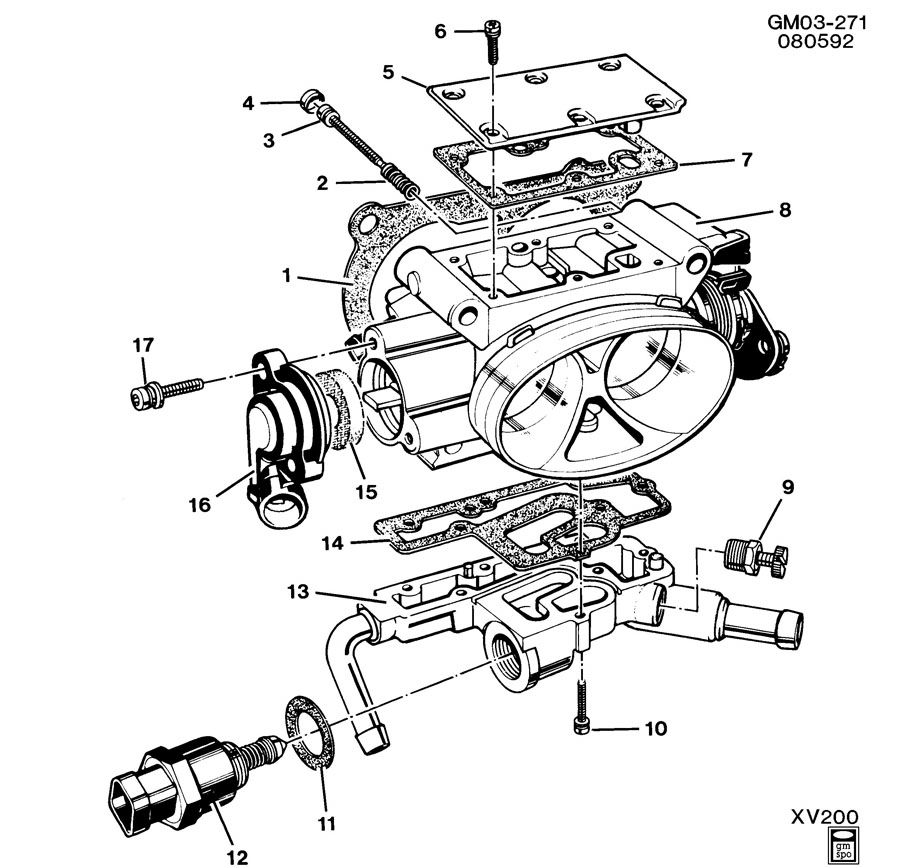
The main reason, you may want to relocate the sensor from the hot plenum to the air intake duct that routes the air from the air filter , is so that the ECM sees the correct air temperature. Three causes why it doesn't:
1) the Intake Air Temperature (or Manifold Air Temperature) sensor is located in the intake plenum, on its underside, so it is heatsoaked from all the hot surrounding metal.
2) the stock Intake Air Temperature sensor is nothing but a CTS (Coolant Temperature Sensor) which is a big metal piece with threads and a connector. So in fact, this big piece of metal has NO WAY of measuring the temperature of the air at the big honking metal tip, instead it measures the temperature of the hot manifold.
3) the intake manifold is full of what? Air? Well, only at WOT. Otherwise (most of the time), there is a lot of vaccum in the manifold (i.e. lack of air). So WHAT air temperature can the sensor measure anyway?
theres several available,
Oreilly
IAT- BWD WT3000
CTS- BWD WT3000
Autozone
IAT- Duralast SU109
CTS- Duralast SU109
RockAuto
IAT- Standard TX3
AC Delco 213928
Airtex 5S1018
CTS- Standard TX3
AC Delco 213928
Airtex 5S1018
Napa
IAT- MPE TS4052SB
Echlin TS4052
CTS- MPE TS4052SB
Echlin TS4052
http://www.ecklerscorvette.com/corvette ... -1991.html
THIS IS THE SENSOR YOU WANT, from ECKLERS for $22
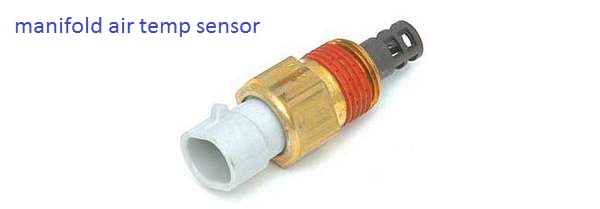
BTW its originally located in the lower under surface of the tpi plenum, youll need too plug the threaded hole in the lower plenum once its removed with a plug, and route the sensor wire with an extender to the new sensor location
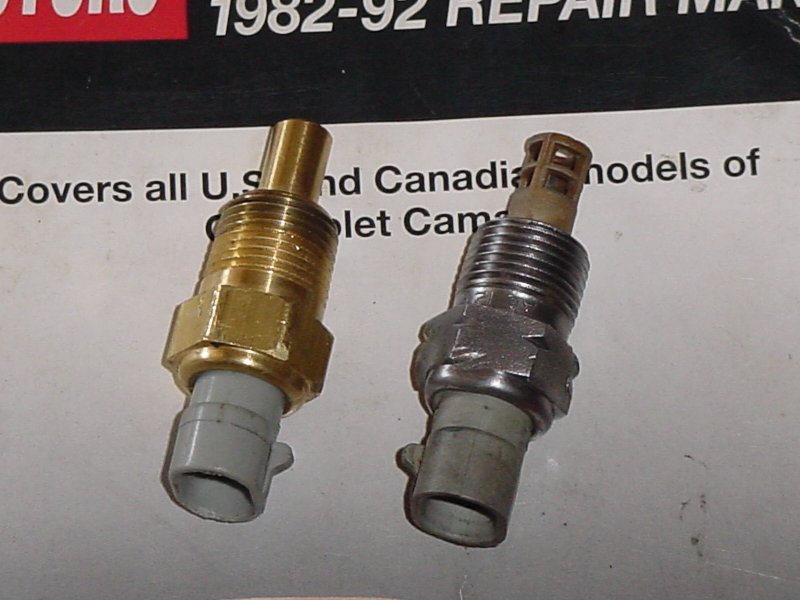
Measured Value
Engine Coolant Temperature Sensor. 185 Ohms @ 210F, 3400 Ohms @ 68F, 7,500 Ohms @ 39 F.
Engine Oil Temperature Sensor. 185 Ohms @ 210 F, 3400 Ohms @ 68 F, 7,500 Ohms @39 F.
Oil Pressure Sender/Switch. 1 Ohms @ 0 PSI, 43 Ohms @ 30 PSI, 86 Ohms @ 60 PSI.
Fuel Quantity Sender. 0 Ohms @ Empty, 45 Ohms @ 1/2 Full, 90 Ohms @ Full.
MAT (Manifold Absolute Temperature Sensor). 185 Ohms @ 210 F, 3400 Ohms @ 70 F, 15,000 Ohms @ 40 F.
Outside Temperature Sensor. 4400 Ohms @ 60 F, 2200 Ohms @ 85 F.
In Car Temp Temperature Sensor. 4400 Ohms @ 60 F, 2200 Ohms @ 85 F.
MAF (Mass Air Flow) Sensor. .4 Volts @ idle, 5 Volts @ Full Throttle.
Oxygen (O2) Sensor. .1 Volt Lean Mixture, .9 Volt Rich Mixture.
TPS (Throttle Position Sensor). .54 Volts Idle, ~ 5 Volts Full Throttle.
Sensor Locations
Sensor
Location
Engine Coolant Temperature Sensor. Front of engine, below Throttle Body.
Engine Oil Temperature Sensor. Left rear of engine, just above the oil filter.
Oil Pressure Sender/Switch. Top, left hand rear of engine.
Fuel Quantity Sender. Top of fuel tank, beneath filler pipe escutcheon panel.
MAT (Manifold Absolute Temperature Sensor). Underside of manifold air plenum at rear.
Outside Temperature Sensor. Right side of engine, top right corner of radiator.
In Car Temp Temperature Sensor. Coupe: above left seat near interior courtesy light, Convertible: center of cargo compartment lid.
MAF (Mass Air Flow) Sensor. Front of engine ahead of throttle body.
Oxygen (O2) Sensor. Left side of engine, in exhaust pipe.
TPS (Throttle Position Sensor). Right side of throttle body at the front.

This picture shows the stock TPI IAT sensor (on the left) vs the V6 IAT sensor (on the right).
The stock TPI IAT sensor is the same as the CTS sensor and thus measures reliably the temperature of whatever mass it is screwed into. Like the hot intake plenum.
Whereas the V6 IAT sensor has a protruding plastic sleeve with screens and a sensor pellet placed in the screened openings, to measure the temperature of the airflow through the screens.
There is no electrical difference in these two sensors whatsoever, their readings are identical, they are completely interchangeable when it comes to their electrical specs and plumbing.
Oh, I forgot a minor detail: their plugs differ very slightly. But if you shave two tabs on the sides of the connector (with a knife or a file), it will plug in with no problems.
Where
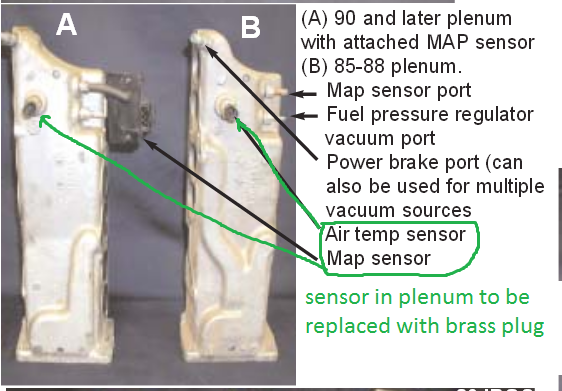
The stock TPI IAT sensor is located on the bottom of the upper intake plenum, towards the back. It is facing the lower intake manifold.
My car came with the filter intake runners that supposedly go on a V6 engine and that have a 3/8" NPT hole in the side. Specifically for the IAT. So this is the place where I installed the new IAT.
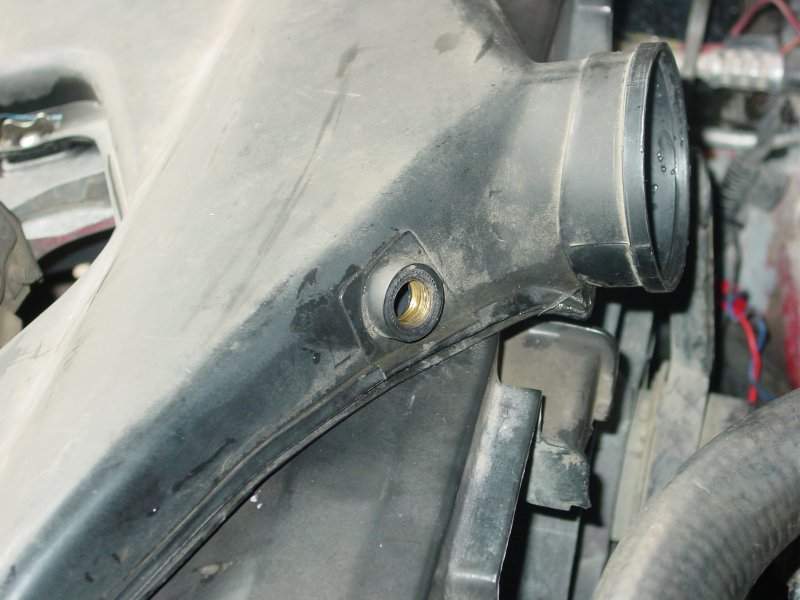
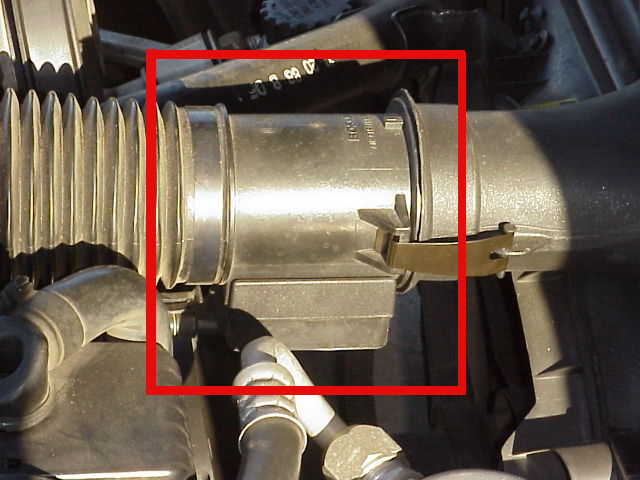
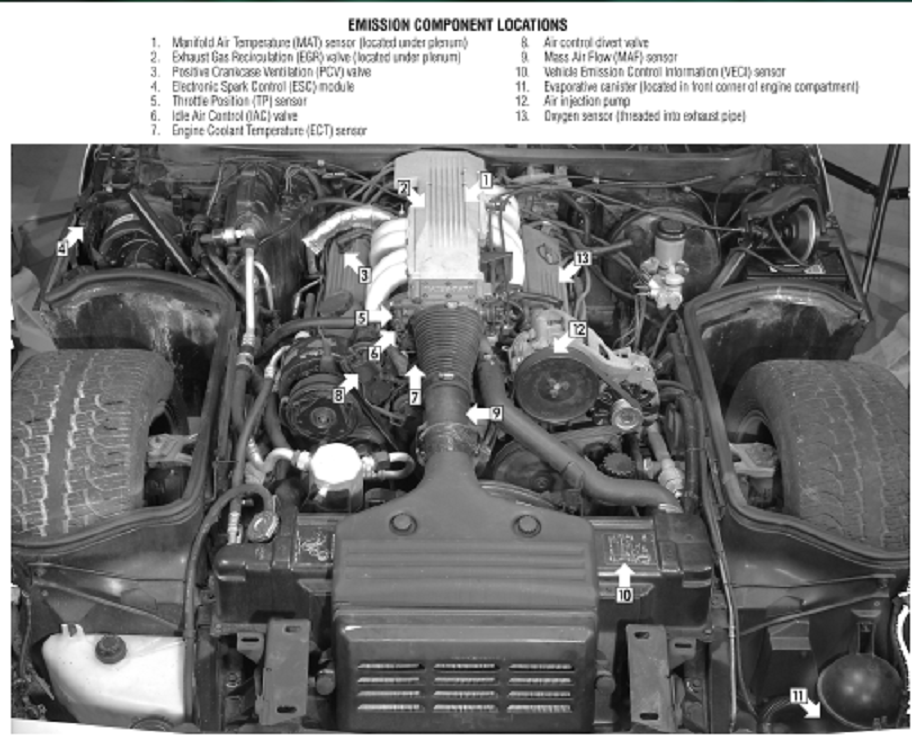
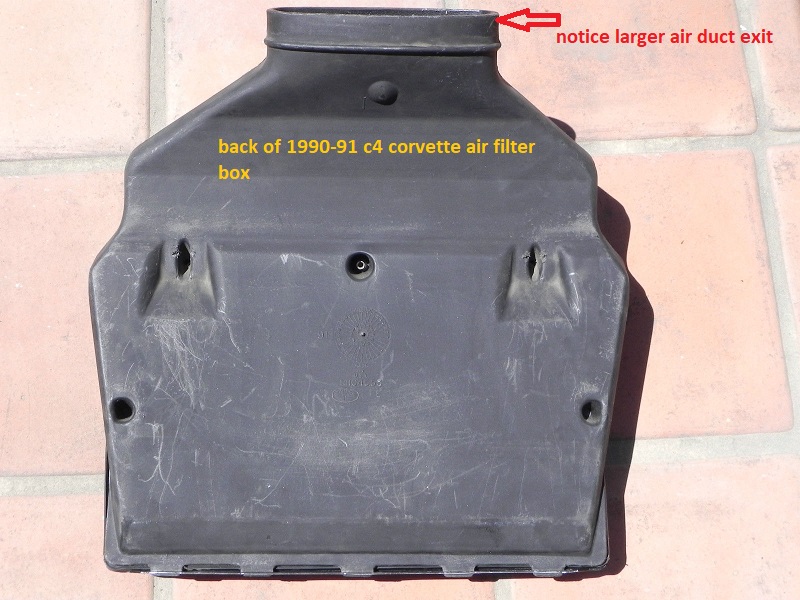
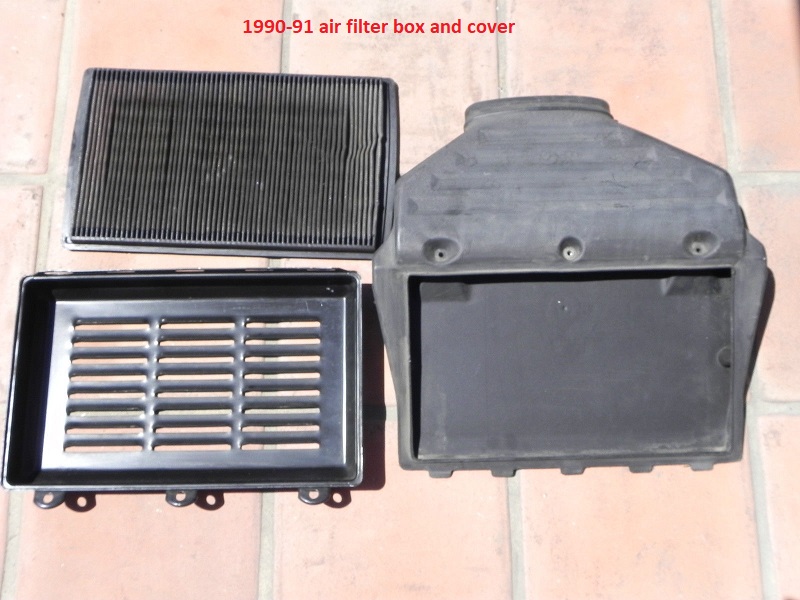
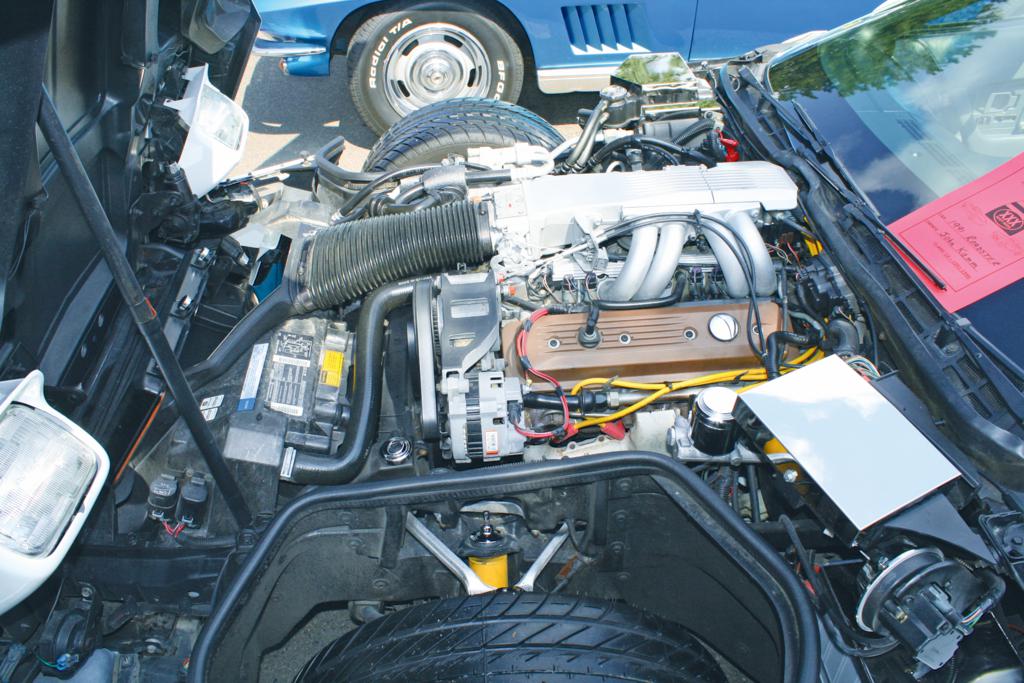
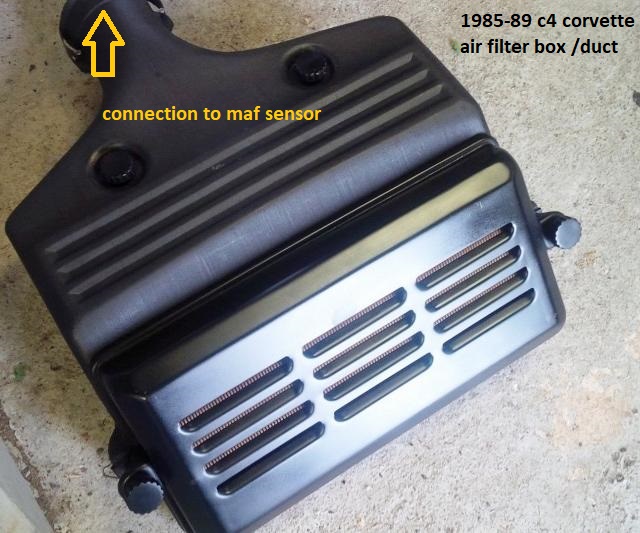

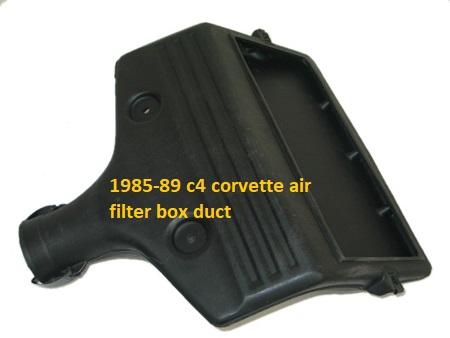
How
The stock TPI IAT sensor is in a not very accessible location. It is hard to reach but You might be able to pull the plug off with a thin long screwdriver and some needlenose pliers. Otherwise, take off the upper intake plenum to access the IAT and connector.
Trace the wireloom behind the passenger valve cover and disconnect it from the black two-prong connector (C121). Splice into the harness and extend it so that it can reach to the new sensor location.
Purchase (or obtain through other means available to you) an IAT sensor for a V6 MPFI engine and make sure it's the right one.
(you can also use the IAT sensor from a TBI engine, it has same electrical characteristics and connector)
(when locating the sensor, be aware that it might be called ACT - Air Charge Temperature, which is more of a Ford term but some stores use it for the Chevy sensor anyway)
Shave the two tabs on the sides of the IAT connector (with a knife or a file) and make sure that it will plug into the new IAT sensor.
Install the IAT sensor into its new location (in the air filter runners or elsewhere).
Now just run the extended wire safely so that it doesn't get caught on any moving parts.
Disconnect the battery for several minutes so that the computer can relearn how to adjust the mixture with this new reading.
Picture of the new IAT sensor installed in the air filter runners.
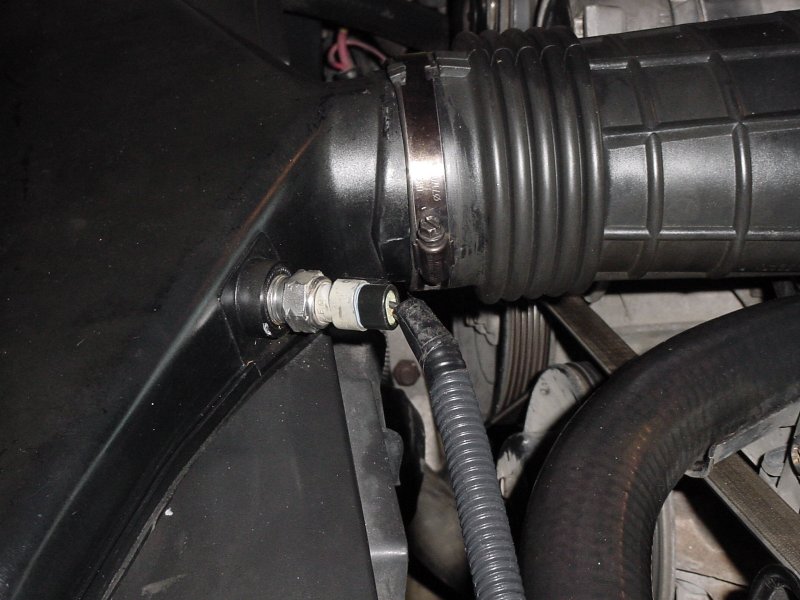
Results
Many people are VERY skeptical about this change and say that it does not make much of a difference.
However, from my practical experiment using data logging software, I can say without exaggeration that I've seen a 35-degree (F) CONSTANT difference in the intake air temperature measurements.
With the stock TPI IAT (heat soaked CTS part), the computer saw 132 degrees in the intake on a 95 degree night. That measurement was performed on the highway, i.e. with lots of air flowing through the engine compartment. Stopped at idle, the temperature reading was even higher.
With the relocated TBI IAT sensor, the computer saw 97 degrees on the SAME night, with 95 degrees outside. Again, this measurement was performed on the highway but the reading did not increase much at lower speeds or at idle.
THE CHANGE OF LOCATION HAS A NOTICEABLE EFFECT ON THE AVERAGE TEMPERATURE THE AIR TEMP SENSOR SEES, (LOWERING IT BY AN AVERAGE OF 30F THUS THE ENGINE SEES THE DENSER AIR ITS REALLY INGESTING) AND AS A RESULT THE FUEL AIR RATIO THE CPU CAUSES THE INJECTORS TO PRODUCE,IS CLOSER TO IDEAL, AND THIS TENDS TO INCREASE THE AVERAGE PERFORMANCE BY KEEPING THE FUEL AIR RATIO A BIT RICHER WHICH TENDS TO INCREASE THE ENGINE TORQUE
So there, it's not a myth and if done properly, the computer will see the REAL air temperature. And especially in Texas, that makes a world of difference.
youll find many guys claiming that aftermarket CPU chip upgrades help a great deal
Ive found some help marginally but many actually hurt performance
http://www.iroc-z.com/articles/articlepages/1990-3Chips Article by Cliff Gromer, Super Stock, 1991.htm
http://garage.grumpysperformance.co...-corvette-intake-air-temperature-sensor.4819/
The main reason, you may want to relocate the sensor from the hot plenum to the air intake duct that routes the air from the air filter , is so that the ECM sees the correct air temperature. Three causes why it doesn't:
1) the Intake Air Temperature (or Manifold Air Temperature) sensor is located in the intake plenum, on its underside, so it is heatsoaked from all the hot surrounding metal.
2) the stock Intake Air Temperature sensor is nothing but a CTS (Coolant Temperature Sensor) which is a big metal piece with threads and a connector. So in fact, this big piece of metal has NO WAY of measuring the temperature of the air at the big honking metal tip, instead it measures the temperature of the hot manifold.
3) the intake manifold is full of what? Air? Well, only at WOT. Otherwise (most of the time), there is a lot of vaccum in the manifold (i.e. lack of air). So WHAT air temperature can the sensor measure anyway?
theres several available,
Oreilly
IAT- BWD WT3000
CTS- BWD WT3000
Autozone
IAT- Duralast SU109
CTS- Duralast SU109
RockAuto
IAT- Standard TX3
AC Delco 213928
Airtex 5S1018
CTS- Standard TX3
AC Delco 213928
Airtex 5S1018
Napa
IAT- MPE TS4052SB
Echlin TS4052
CTS- MPE TS4052SB
Echlin TS4052
http://www.ecklerscorvette.com/corvette ... -1991.html
THIS IS THE SENSOR YOU WANT, from ECKLERS for $22

BTW its originally located in the lower under surface of the tpi plenum, youll need too plug the threaded hole in the lower plenum once its removed with a plug, and route the sensor wire with an extender to the new sensor location

Measured Value
Engine Coolant Temperature Sensor. 185 Ohms @ 210F, 3400 Ohms @ 68F, 7,500 Ohms @ 39 F.
Engine Oil Temperature Sensor. 185 Ohms @ 210 F, 3400 Ohms @ 68 F, 7,500 Ohms @39 F.
Oil Pressure Sender/Switch. 1 Ohms @ 0 PSI, 43 Ohms @ 30 PSI, 86 Ohms @ 60 PSI.
Fuel Quantity Sender. 0 Ohms @ Empty, 45 Ohms @ 1/2 Full, 90 Ohms @ Full.
MAT (Manifold Absolute Temperature Sensor). 185 Ohms @ 210 F, 3400 Ohms @ 70 F, 15,000 Ohms @ 40 F.
Outside Temperature Sensor. 4400 Ohms @ 60 F, 2200 Ohms @ 85 F.
In Car Temp Temperature Sensor. 4400 Ohms @ 60 F, 2200 Ohms @ 85 F.
MAF (Mass Air Flow) Sensor. .4 Volts @ idle, 5 Volts @ Full Throttle.
Oxygen (O2) Sensor. .1 Volt Lean Mixture, .9 Volt Rich Mixture.
TPS (Throttle Position Sensor). .54 Volts Idle, ~ 5 Volts Full Throttle.
Sensor Locations
Sensor
Location
Engine Coolant Temperature Sensor. Front of engine, below Throttle Body.
Engine Oil Temperature Sensor. Left rear of engine, just above the oil filter.
Oil Pressure Sender/Switch. Top, left hand rear of engine.
Fuel Quantity Sender. Top of fuel tank, beneath filler pipe escutcheon panel.
MAT (Manifold Absolute Temperature Sensor). Underside of manifold air plenum at rear.
Outside Temperature Sensor. Right side of engine, top right corner of radiator.
In Car Temp Temperature Sensor. Coupe: above left seat near interior courtesy light, Convertible: center of cargo compartment lid.
MAF (Mass Air Flow) Sensor. Front of engine ahead of throttle body.
Oxygen (O2) Sensor. Left side of engine, in exhaust pipe.
TPS (Throttle Position Sensor). Right side of throttle body at the front.

This picture shows the stock TPI IAT sensor (on the left) vs the V6 IAT sensor (on the right).
The stock TPI IAT sensor is the same as the CTS sensor and thus measures reliably the temperature of whatever mass it is screwed into. Like the hot intake plenum.
Whereas the V6 IAT sensor has a protruding plastic sleeve with screens and a sensor pellet placed in the screened openings, to measure the temperature of the airflow through the screens.
There is no electrical difference in these two sensors whatsoever, their readings are identical, they are completely interchangeable when it comes to their electrical specs and plumbing.
Oh, I forgot a minor detail: their plugs differ very slightly. But if you shave two tabs on the sides of the connector (with a knife or a file), it will plug in with no problems.
Where

The stock TPI IAT sensor is located on the bottom of the upper intake plenum, towards the back. It is facing the lower intake manifold.
My car came with the filter intake runners that supposedly go on a V6 engine and that have a 3/8" NPT hole in the side. Specifically for the IAT. So this is the place where I installed the new IAT.








How
The stock TPI IAT sensor is in a not very accessible location. It is hard to reach but You might be able to pull the plug off with a thin long screwdriver and some needlenose pliers. Otherwise, take off the upper intake plenum to access the IAT and connector.
Trace the wireloom behind the passenger valve cover and disconnect it from the black two-prong connector (C121). Splice into the harness and extend it so that it can reach to the new sensor location.
Purchase (or obtain through other means available to you) an IAT sensor for a V6 MPFI engine and make sure it's the right one.
(you can also use the IAT sensor from a TBI engine, it has same electrical characteristics and connector)
(when locating the sensor, be aware that it might be called ACT - Air Charge Temperature, which is more of a Ford term but some stores use it for the Chevy sensor anyway)
Shave the two tabs on the sides of the IAT connector (with a knife or a file) and make sure that it will plug into the new IAT sensor.
Install the IAT sensor into its new location (in the air filter runners or elsewhere).
Now just run the extended wire safely so that it doesn't get caught on any moving parts.
Disconnect the battery for several minutes so that the computer can relearn how to adjust the mixture with this new reading.
Picture of the new IAT sensor installed in the air filter runners.

Results
Many people are VERY skeptical about this change and say that it does not make much of a difference.
However, from my practical experiment using data logging software, I can say without exaggeration that I've seen a 35-degree (F) CONSTANT difference in the intake air temperature measurements.
With the stock TPI IAT (heat soaked CTS part), the computer saw 132 degrees in the intake on a 95 degree night. That measurement was performed on the highway, i.e. with lots of air flowing through the engine compartment. Stopped at idle, the temperature reading was even higher.
With the relocated TBI IAT sensor, the computer saw 97 degrees on the SAME night, with 95 degrees outside. Again, this measurement was performed on the highway but the reading did not increase much at lower speeds or at idle.
THE CHANGE OF LOCATION HAS A NOTICEABLE EFFECT ON THE AVERAGE TEMPERATURE THE AIR TEMP SENSOR SEES, (LOWERING IT BY AN AVERAGE OF 30F THUS THE ENGINE SEES THE DENSER AIR ITS REALLY INGESTING) AND AS A RESULT THE FUEL AIR RATIO THE CPU CAUSES THE INJECTORS TO PRODUCE,IS CLOSER TO IDEAL, AND THIS TENDS TO INCREASE THE AVERAGE PERFORMANCE BY KEEPING THE FUEL AIR RATIO A BIT RICHER WHICH TENDS TO INCREASE THE ENGINE TORQUE
So there, it's not a myth and if done properly, the computer will see the REAL air temperature. And especially in Texas, that makes a world of difference.
youll find many guys claiming that aftermarket CPU chip upgrades help a great deal
Ive found some help marginally but many actually hurt performance
http://www.iroc-z.com/articles/articlepages/1990-3Chips Article by Cliff Gromer, Super Stock, 1991.htm
Last edited by a moderator:
